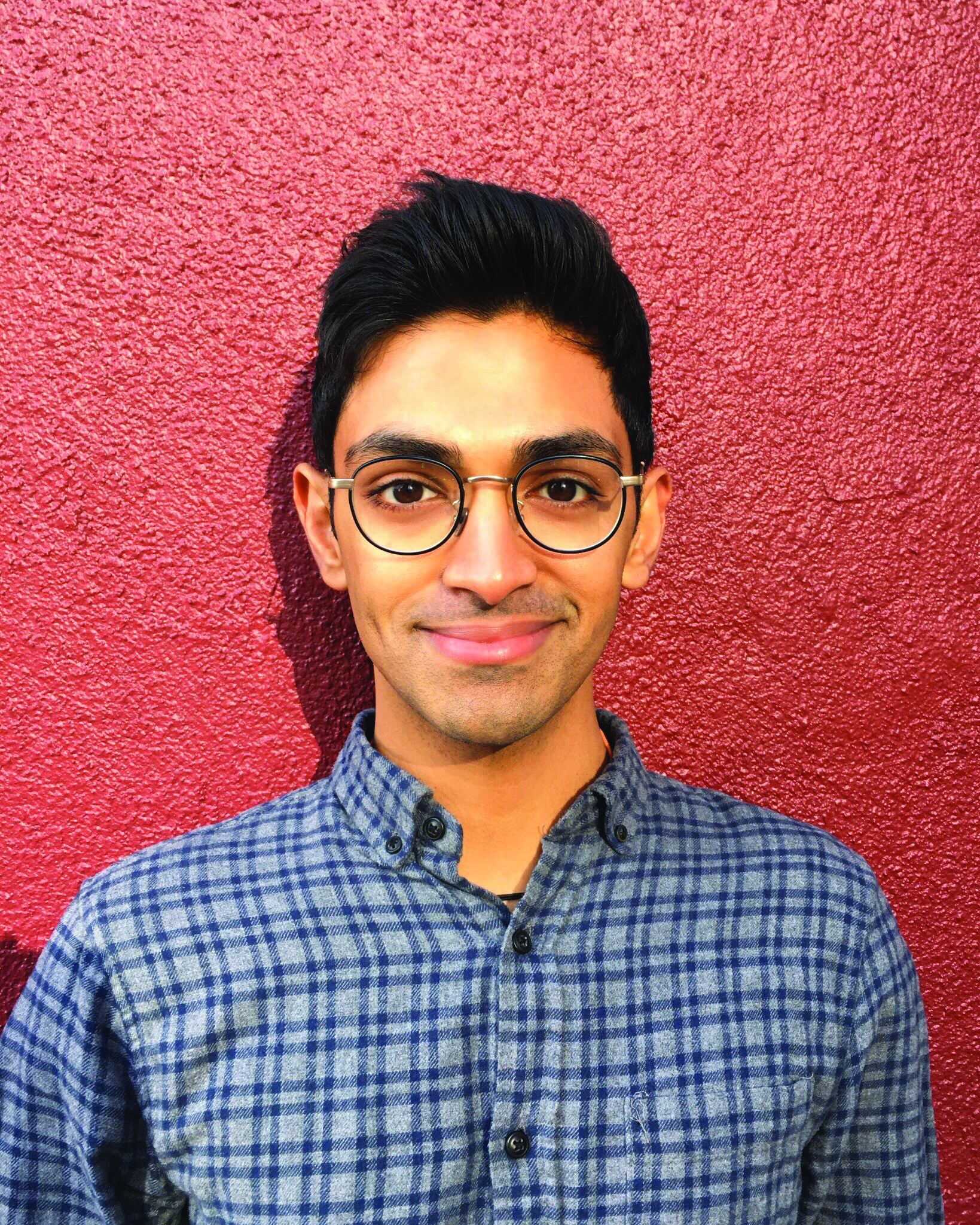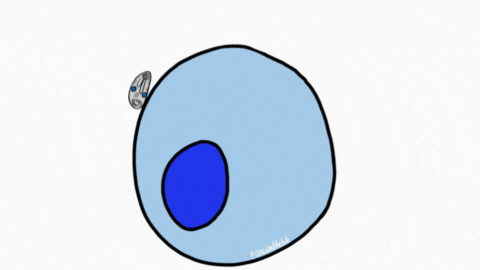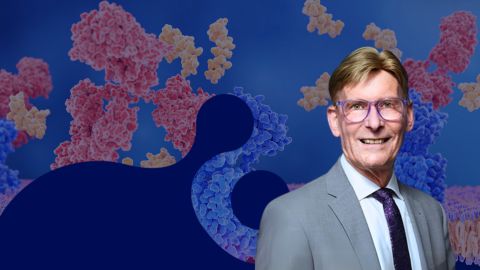Varghese roams from forests
to enzymes
When Febin Varghese is not puzzling out enzyme structures in the lab, there’s a good chance he’s out on the trail.
The 2020 JBC Herbert Tabor Early Career Investigator Award winners will present their work at the 2021 ASBMB Annual Meeting, 1:45–3 p.m., Tuesday, April 27.
Find out about registering for the annual meeting here.
“When I was really young, I used to watch a lot of documentaries on National Geographic and Discovery Science and such,” Varghese said. “We would watch as a family, and I think that’s where it all started.”

This early interest in the natural world sparked Varghese’s lifelong study of biology both out in the forest and deep inside molecular structures. “I love being in the lab, but I try my best to take breaks,” he said. “Something about being in the mountain air, up in the clouds, stepping away to clear your head, is really refreshing.”
After earning a doctorate at Cambridge University, Varghese embarked on a 15-month backpacking journey throughout Southeast Asia, Australia and New Zealand.
He then returned to the world of metalloenzymes as a postdoc at the Imperial College of London, where researchers in his lab peered into the mystery of how associated proteins protect nitrogen fixation in the presence of oxygen. The project combined Varghese’s interest in energy-conserving metalloenzymes with the potential for long-term environmental applications — an excellent fit. For his contribution to the study as first author on the paper published in the Journal of Biological Chemistry, Varghese won a 2020 Journal of Biological Chemistry/Herbert Tabor Early Career Investigator Award.
“I was very surprised, I wasn’t expecting it at all,” he said of the award. “It’s an honor to be recognized, but a lot of people’s work went into this paper. Collaboration is everything in science.”
Protecting nitrogenase
Nitrogen is abundant in the atmosphere yet scarce in the biosphere; only prokaryotes are equipped with the enzymes necessary to fix atmospheric nitrogen into bioavailable forms. To subvert this limitation and boost crop production, researchers are studying nitrogen-fixing enzymes with the goal of genetically engineering crop plants that can express nitrogenase of their own.
Iron-only nitrogenase, encoded by fewer genes than other nitrogen-fixing enzymes, is a promising candidate for this endeavor. However, it becomes inactive in the presence of oxygen; this barrier must be overcome for it to be expressed functionally in crops.
To explore how the structure of iron-only nitrogenase responds to oxygen, Varghese and colleagues at the James W. Murray lab at the department of life sciences at the Imperial College of London investigated the structure and oxygen-reducing role of Anf3, a protein associated with nitrogenase function.
By characterizing the crystal structure of Anf3 at atomic resolution, the team saw that its heme and flavin adenine dinucleotide cofactors were unexpectedly close to each other.
“The structure itself was a surprise,” Varghese said. “We knew (Anf3) had a heme and an FAD cofactor, but that they were so close together and that there was a cooperative effect was unexpected.”
Further experiments suggested that electron transfer between the two cofactors contributes to Anf3’s ability to reduce oxygen, thus protecting iron-only nitrogenase from being inactivated. Anf3 protein is a promising candidate for enhancing functional nitrogenase in aerobic environments.
Enjoy reading ASBMB Today?
Become a member to receive the print edition four times a year and the digital edition monthly.
Learn moreGet the latest from ASBMB Today
Enter your email address, and we’ll send you a weekly email with recent articles, interviews and more.
Latest in People
People highlights or most popular articles

Sketching, scribbling and scicomm
Graduate student Ari Paiz describes how her love of science and art blend to make her an effective science communicator.

Embrace your neurodivergence and flourish in college
This guide offers practical advice on setting yourself up for success — learn how to leverage campus resources, work with professors and embrace your strengths.

Survival tools for a neurodivergent brain in academia
Working in academia is hard, and being neurodivergent makes it harder. Here are a few tools that may help, from a Ph.D. student with ADHD.

Quieting the static: Building inclusive STEM classrooms
Christin Monroe, an assistant professor of chemistry at Landmark College, offers practical tips to help educators make their classrooms more accessible to neurodivergent scientists.

Hidden strengths of an autistic scientist
Navigating the world of scientific research as an autistic scientist comes with unique challenges —microaggressions, communication hurdles and the constant pressure to conform to social norms, postbaccalaureate student Taylor Stolberg writes.

Richard Silverman to speak at ASBMB 2025
Richard Silverman and Melissa Moore are the featured speakers at the ASBMB annual meeting to be held April 12-15 in Chicago.

